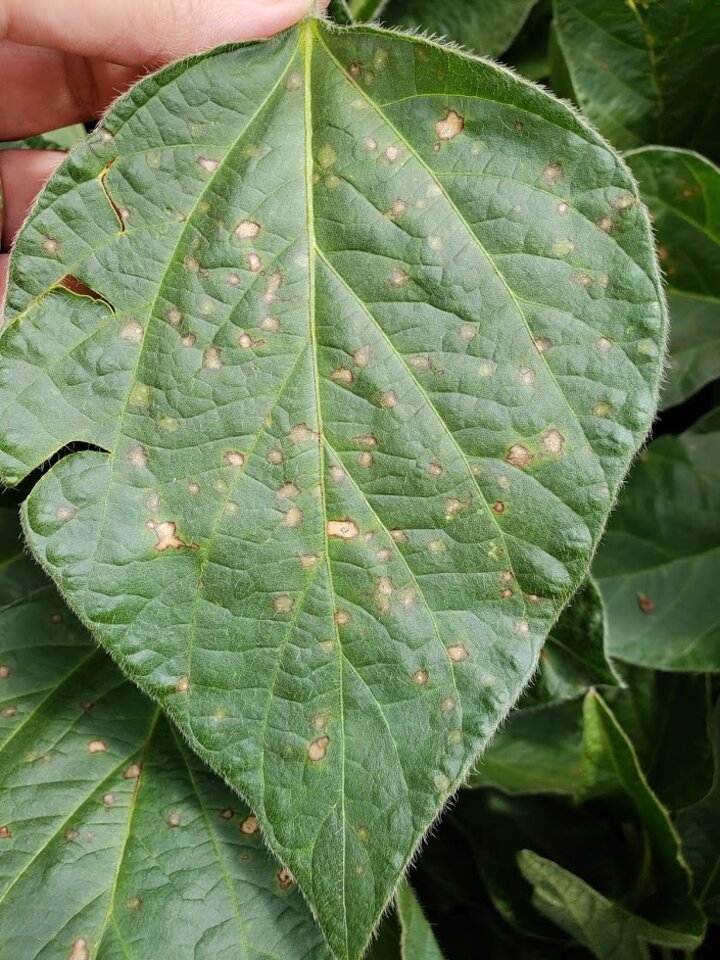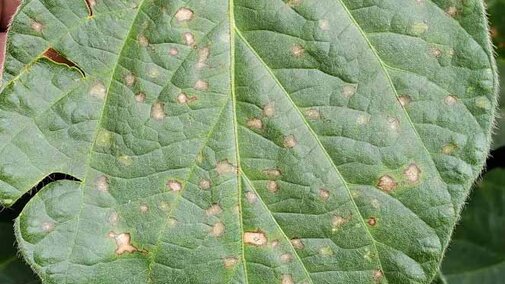Over the past few days we've received several reports of frogeye leaf spot in soybean. Frogeye leaf spot, a fungal disease caused by Cercospora sojina, is becoming more common across the eastern third of Nebraska.

With most of the soybean crop entering early pod stages over the next week, now is the time to decide whether you need a fungicide. Yield loss estimates due to frogeye leaf spot have been reported as high as 30% nationally with extensive leaf blighting; but for Nebraska I would estimate less than 20% yield loss in highly susceptible varieties.
The disease is most severe when soybean is grown continuously in the same field, particularly in fields where tillage is reduced, since this is a residue-borne disease. The primary source for this disease is infested residue, infected seed, and airborne spores. In areas where this disease has been observed in past years it will typically show up again if weather conditions are favorable. Overcast conditions or high humidity are favorable and irrigation or recent rains in some portions of the state will increase the potential for this disease.
What to Look For
Infection can occur at any stage of soybean development, but most often occurs after flowering and is typically in the upper canopy. Initial symptoms are small, dark spots on the leaves. Spots eventually enlarge to a diameter of about ¼ inch. The centers of the lesions will become gray to brown and have a reddish purple margin. Individual leaf spots can coalesce to create irregular patterns of blighting on the leaf.
Management of Frogeye Leaf Spot
Resistance. Soybean varieties vary in their resistance to frogeye leaf spot. Several genes are commonly used to provide resistance. You will want to know the susceptibility of your variety if you’re trying to decide whether a fungicide is warranted.
Cultural Practices. Frogeye leaf spot is more severe in continuously cropped soybean fields. Reduced tillage systems will tend to have more as the pathogen overwinters in residue.
Fungicide Application. A fungicide application to manage frogeye leaf spot is typically not warranted in most Nebraska fields. Fields with a history of frogeye should be watched carefully and if disease develops, application of a strobilurin fungicide at the R3 (pod set) to early R4 growth stage is considered most effective. Most current fungicide products are combinations with different modes of action that have activity against this fungus and are a good resistance management strategy.
Disclosure
In accordance with the University of Nebraska-Lincoln’s Conflict of Interest policy, the Conflict of Interest Review Committee has determined that it must be disclosed that Dr. Giesler has financial interest in Field Screen, LLC which receives funding from agricultural companies for pesticide testing in southeast Missouri. For more information on this disclosure please see his CropWatch Bio.

